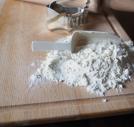Avoiding Injection Site Problems with Type 1 Diabetes
The bodies of those who suffer from type 1 diabetes cannot make insulin on their own. For this reason, patients are subject to multiple injections of insulin each day. Because injections can be more or less comfortable to take, depending upon where in the body they are placed, it is not uncommon for patients to utilize the same areas of the body over and over for injections.
The risks of over-utilizing certain areas of the body include developing abnormal accumulations of fat beneath the skin. As the fat accumulates the skin will become visibly lumpy and injection will become more difficult.
Techniques for Effective Insulin Injection
Insulin is accepted into the body at faster or slower rates, depending upon where the injection is located. An insulin injection is subcutaneous, which is to say that the insulin is injected beneath the skin using a small needle.
There are techniques to injection that prevent insulin from being injected into the muscle, where it will work too quickly, or into the skin, a painful injection that will not be processed by the body. These involve injecting at an angle, with the angle depending upon body type.
Where in the body insulin is injected is important as well. Injections into the abdomen are absorbed most quickly, with the upper arms next. Injections to the thighs and then to the buttocks are absorbed more slowly.
Injections for the same time frame each day should be given in the same body region. For instance, morning insulin given in the abdomen one day should be given in a different part of the abdomen each day.
Injection sites should be continuously rotated. An injection in the right upper arm can be alternated with the left upper arm. Injections to the abdomen should rotate among different quadrants.
Skin checks should occur regularly, looking for hardened areas of the skin. Injections to these spots should cease until the tissue beneath the skin begins to soften again.
Lipohypertrophy
Lipohypertrophy is a complication that develops when repeated injections to the same injection site cause fat and scar tissue to form. The appearance can be single or multiple hard lumps visible through the skin. With time, and avoiding injections to these areas, these lumps should disappear. If they don’t resolve, consult with your physician.
Injections made through these areas may result in slowed absorption, interfering with optimal blood glucose management.
Lipohypertrophy is more common with treatment of type 1 diabetes than with type 2.
Sources: Healthline.com, UpToDate.com
Photo: Pixabay



































